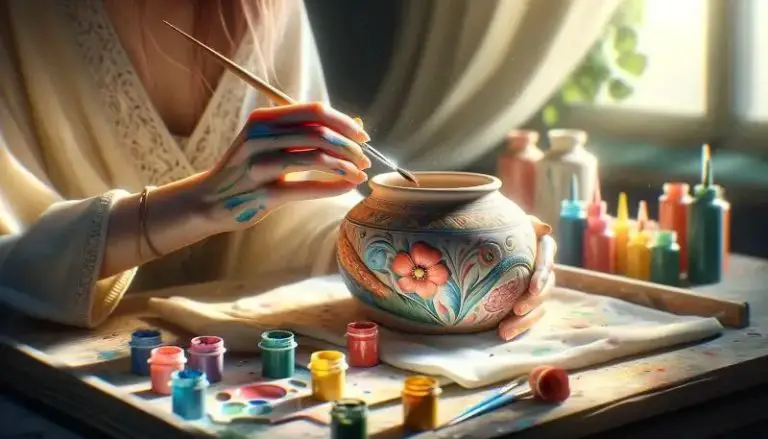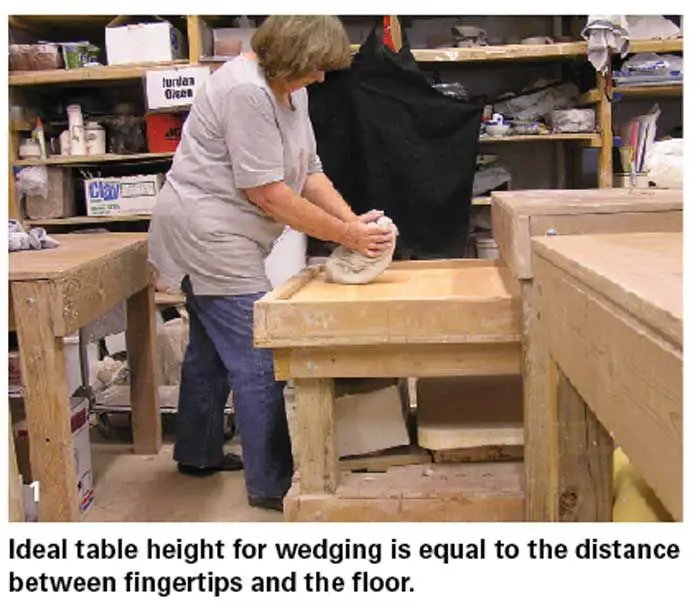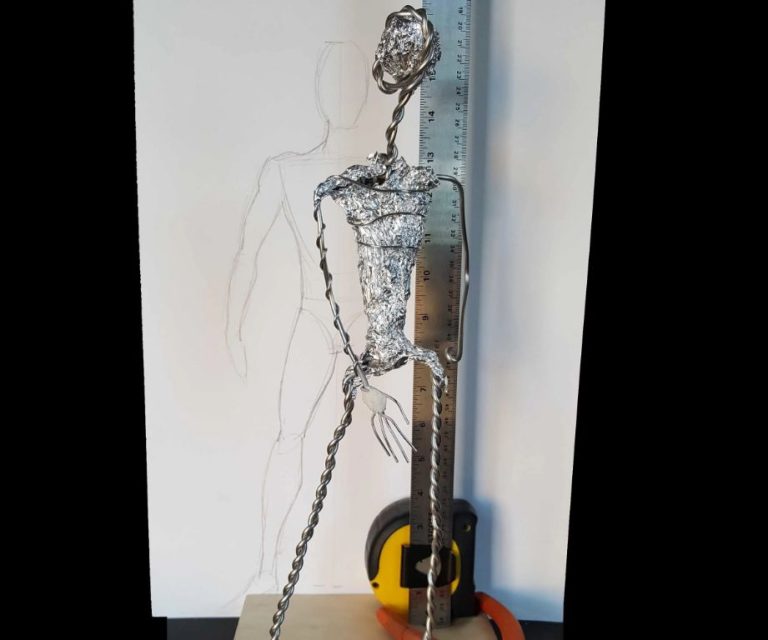Why Is My Clay Cracking As It Dries?
Clay is a unique material composed of tiny mineral particles that bind together when wet and harden as they dry. However, this drying process also causes clay items to shrink and crack. The shrinking and cracking occurs due to the evaporation of water from the clay. As the clay loses moisture, the individual clay particles are pulled closer together, reducing the volume of the item. This results in tensile stresses that lead to cracks and fissures. Understanding the composition of clay, the role of water, and the drying dynamics can help potters minimize cracking and produce high quality pieces. This article will provide an overview of the clay drying and cracking process.
Composition of Clay
Clay is made up of extremely small, flat mineral particles. The most common minerals in clay are kaolinite, illite, and smectite. These are all hydrous aluminum phyllosilicates, meaning they contain silicon, aluminum, oxygen, and water. The mineral particles in clay are less than 2 micrometers in size. To put that in perspective, a single human hair is around 50-100 micrometers wide. So clay particles are tiny!
These tiny mineral particles have platy or flaky shapes. Their flat surfaces give clay its moldable, plastic characteristics when wet. However, when the water evaporates from the clay, the strong bonds between the mineral particles cause the clay to harden.
Forces on Clay Particles
The properties of clay are influenced significantly by the forces between the small plate-like particles that make up clay. There are two major forces that act on clay particles: attractive forces and repulsive forces.
Attractive forces cause the particles to cling together. This is due to the charges on the surface of each particle. Water molecules are polar, meaning they have slight negative and positive charges at each end. When clay is mixed with water, the water molecules will attach themselves to the charged sites on the clay particles, forming a thin water layer that acts like a glue.
However, at the same time, repulsive forces push the particles apart. These forces originate from the shape and negative charge of the particles themselves, which make them repel each other. The thin water layers surrounding each particle also repel one another. Overall, attractive and repulsive forces exist in an equilibrium state in wet clay. But as clay loses moisture, the balance shifts and attractive forces gain dominance. This shift is a major factor in clay’s tendency to crack and shrink.
Water’s Role
Clay is made of tiny particles that have electrical charges on their surfaces. These charged particles are strongly attracted to water molecules. When clay is mixed with water, the water molecules fill the gaps between the clay particles and hold them together. This gives the clay plasticity so that it can be molded into shapes.
As clay starts to dry, the water molecules slowly evaporate. This causes the gaps between the clay particles to get larger as the water leaves. Without the water to hold them together, the clay particles are no longer bonded tightly.
Drying Process
As clay loses moisture during the drying process, water evaporates from the surface and pores of the clay body. The water acts as a lubricant between the clay particles, so as it evaporates, the clay particles are brought closer together. This evaporative loss of water causes the clay to shrink. The outer surface dries first, forming a stiff shell, while the interior of the clay retains moisture. This moisture gradient from the dry outer shell to the wet interior is the root cause of cracking and uneven drying.
The rate of evaporation depends on factors like temperature, humidity, clay composition, and dimensions of the piece. Higher temperatures cause the clay and water to expand, then result in rapid evaporation as the water reaches boiling point (100°C/212°F). Low humidity allows the water to evaporate faster, while high humidity slows the rate of evaporation. Denser clays with smaller particles and more confining pore spaces hold more water and take longer to dry. Thicker sections retain more moisture in the center.
Shrinkage
As clay loses moisture during the drying process, the material undergoes shrinkage. This is because water molecules act as a lubricant between the clay particles, allowing them to slide over one another. When the water evaporates away, the clay particles are brought closer together. The overall effect is that the clay body becomes more compact and shrinks in size. This shrinkage occurs in all directions, causing the total volume of the clay to decrease.
The amount of shrinkage depends on several factors, including the initial moisture content and composition of the clay. Clays with higher plasticity and finer particle sizes tend to shrink more. Dry clay weighed before and after firing will show a reduction in mass due to the loss of water. Understanding and anticipating shrinkage is an important part of creating functional pottery and controlling the drying process.
Tension Builds
As the clay dries and shrinks, tensions start to build between clay particles. The clay wants to shrink in all directions as it loses moisture, but neighboring particles exert forces against each other that resist the shrinkage. These opposing forces cause stresses to accumulate in the clay body.
The clay is weakest where the stresses are highest, such as near edges and corners. Tiny gaps can begin to open between particles as they are pulled apart. This builds even more tension in the clay. As water continues evaporating from the clay, the tension reaches a breaking point.
Cracking Occurs
As the clay dries and shrinks, tension builds up within the clay body. The clay particles are pulled closer together as the water evaporates. However, the clay cannot shrink evenly throughout. The outer surfaces dry faster than the inner core. This creates stress differentials within the clay.
The outer layers of clay become rigid as they dry, while the inner clay is still plastic and shrinking. This tugging effect generates internal tension forces. The rigid outer sections resist the shrinkage, but the wet inner core continues to contract. Eventually, the stress becomes too much and the clay body cracks to relieve the strain.
Cracking allows the shrinking inner core to pull apart, releasing some of the pent-up tension. As drying continues, cracks propagate from the surface inwards as stresses exceed the strength of the clay body. Typical drying cracks are usually parallel to the direction of drying. The cracks allow continued shrinkage to occur.
Preventing Cracks
There are a few techniques clay artists can use to help prevent cracks from forming as their creations dry:
Slow the drying process
Allowing clay to dry slowly reduces the internal stresses. Draping plastic over clay overnight or storing work-in-progress in an airtight container are effective ways to slow moisture loss. Just be sure to avoid conditions that could cause mold growth.
Additives
Certain additives mixed into clay can help make it more elastic and less prone to cracking. A few drops of vinegar, glycerin, or liquid clay can increase flexibility. Be careful not to overdo it though, as too much additive can weaken the clay.
An additive specifically designed for minimizing clay cracking is methyl cellulose. This powder binds water in clay, enabling flexibility during drying. Follow the manufacturer’s instructions for the ideal quantity to mix in.
Conclusion
In summary, cracks form in clay as it dries due to the unique composition of clay particles and water’s role in keeping them together. When clay dries, water evaporates, causing the clay body to shrink. This shrinkage creates internal tension as clay particles are pulled closer together. The tensile forces eventually exceed the strength of the clay body, causing cracks to form as a release of stress. Careful drying and even shrinkage are key to minimizing cracking. With proper technique, beautiful crack-free results can be achieved when working with clay.




